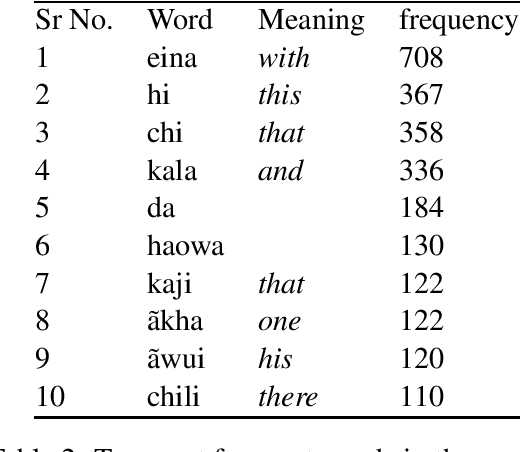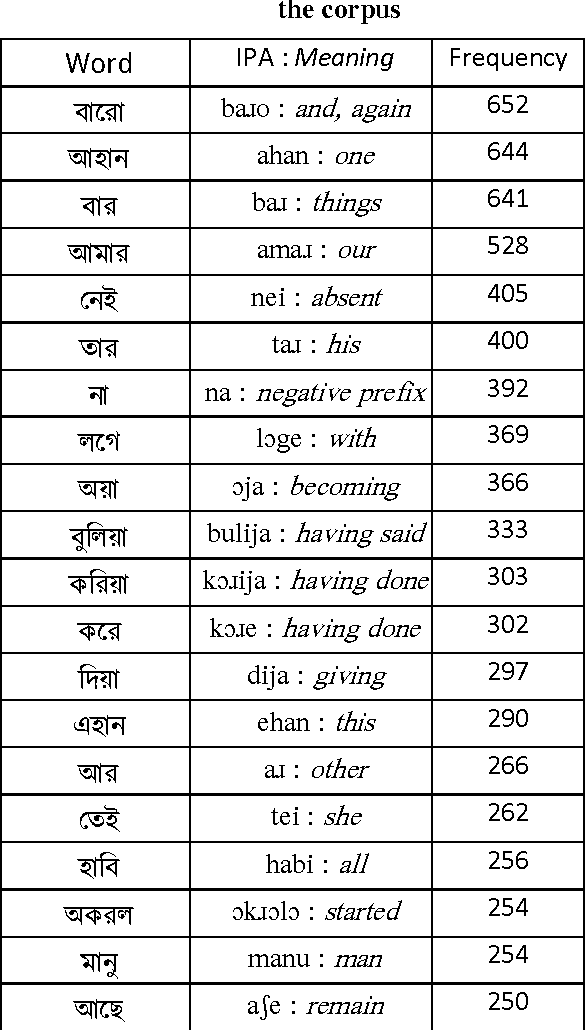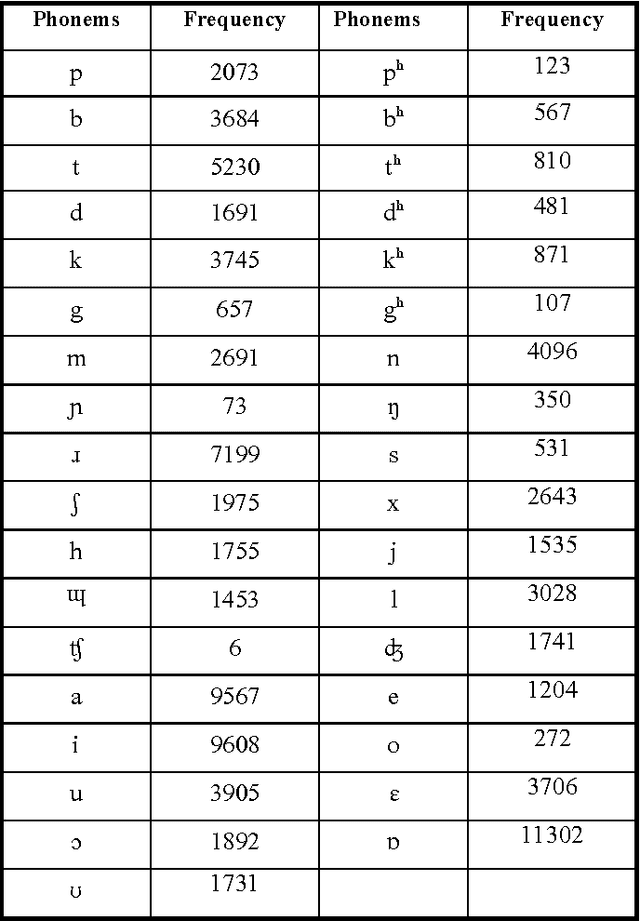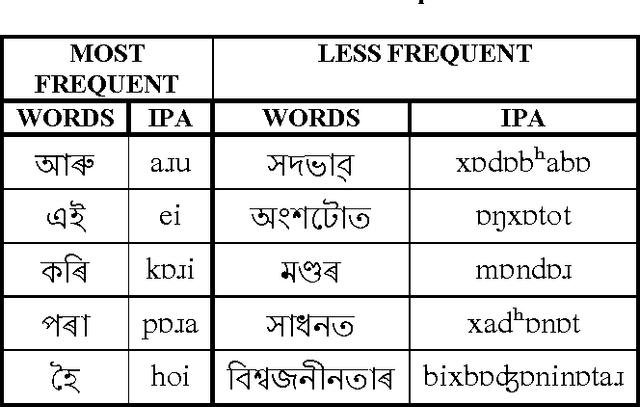Navanath Saharia
Towards the Study of Morphological Processing of the Tangkhul Language
Jun 29, 2020



Abstract:There is no or little work on natural language processing of Tangkhul language. The current work is a humble beginning of morphological processing of this language using an unsupervised approach. We use a small corpus collected from different sources of text books, short stories and articles of other topics. Based on the experiments carried out, the morpheme identification task using morphessor gives reasonable and interesting output despite using a small corpus.
* In proceeding of Regional International Conference on Natural Language Processing (regICON) 2017, 3rd and 4th November 2017, Imphal, India
Morphological Analysis of the Bishnupriya Manipuri Language using Finite State Transducers
Apr 22, 2014



Abstract:In this work we present a morphological analysis of Bishnupriya Manipuri language, an Indo-Aryan language spoken in the north eastern India. As of now, there is no computational work available for the language. Finite state morphology is one of the successful approaches applied in a wide variety of languages over the year. Therefore we adapted the finite state approach to analyse morphology of the Bishnupriya Manipuri language.
Towards The Development of a Bishnupriya Manipuri Corpus
Dec 11, 2013
Abstract:For any deep computational processing of language we need evidences, and one such set of evidences is corpus. This paper describes the development of a text-based corpus for the Bishnupriya Manipuri language. A Corpus is considered as a building block for any language processing tasks. Due to the lack of awareness like other Indian languages, it is also studied less frequently. As a result the language still lacks a good corpus and basic language processing tools. As per our knowledge this is the first effort to develop a corpus for Bishnupriya Manipuri language.
Development and Transcription of Assamese Speech Corpus
Sep 27, 2013


Abstract:A balanced speech corpus is the basic need for any speech processing task. In this report we describe our effort on development of Assamese speech corpus. We mainly focused on some issues and challenges faced during development of the corpus. Being a less computationally aware language, this is the first effort to develop speech corpus for Assamese. As corpus development is an ongoing process, in this paper we report only the initial task.
 Add to Chrome
Add to Chrome Add to Firefox
Add to Firefox Add to Edge
Add to Edge